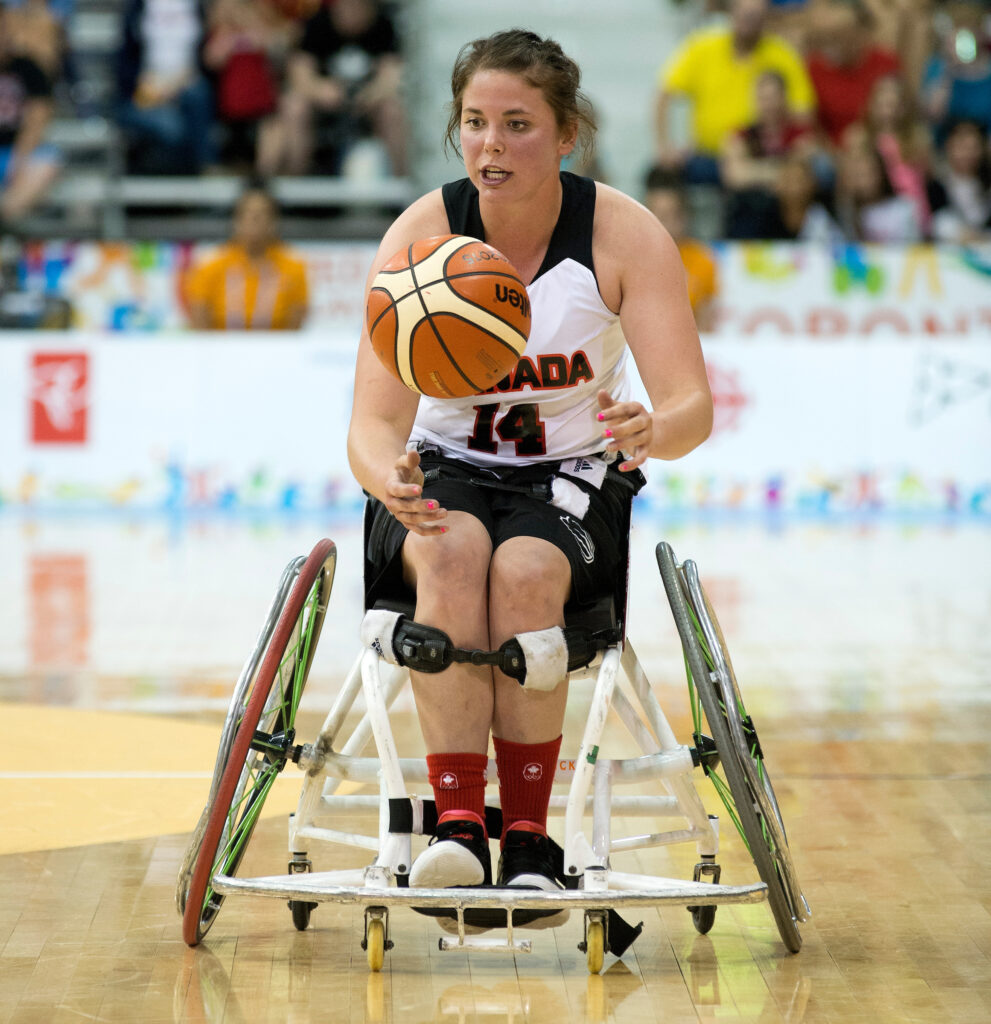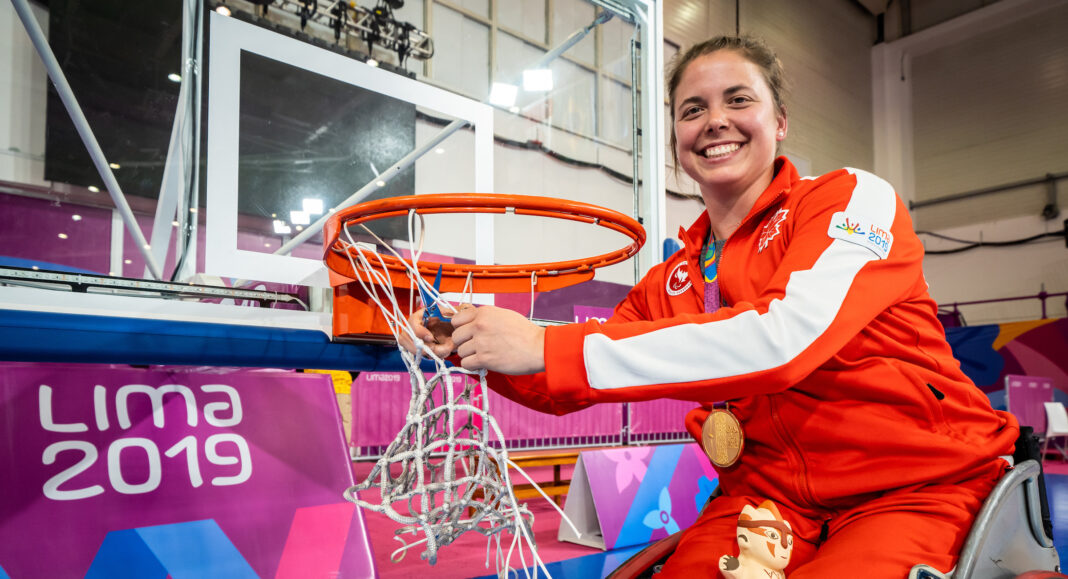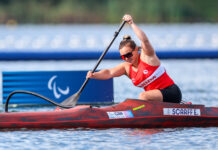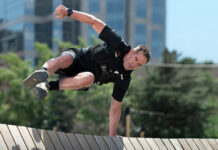In 2012, Erica Gavel believed the fate of her basketball career was sealed when doctors told her she had torn the articular cartilage from her femur and tibia. Though bad news from doctors was nothing new for Gavel after the trio of knee surgeries and countless months of rehab she had undergone in the past couple of years, this time it was different—they said she would never be able to run again.
For Gavel, imagining a life without athletics was nearly impossible. When she was a high-school senior in Prince Albert, Sask., she was faced with choosing between full scholarships for volleyball, basketball and softball all over North America. Ultimately, she chose the University of Saskatchewan for basketball and completed a successful rookie year. But after a series of injuries, and the one that was currently threatening to take her out of the game completely, Gavel knew she had another option available to her: the Paralympics.
“When I first went into wheelchair basketball, I had never seen the sport,” says Gavel, who, just four years after being introduced to it, went on to represent Team Canada as 4.5-point player in 2016 Paralympic Games in Rio de Janeiro, where her team placed fifth.
But the journey to get there wasn’t as easy as you might think.

Canada’s Women’s Wheelchair Basketball team competes against Guatemala
Having the unique perspective of both a para-athlete and able-bodied athlete, the gaps between the two became abundantly clear to Gavel. Canadian universities’ lack of inclusion for para-athletes has sent the best players over the border, including her. At the time, Gavel accepted an athletic scholarship to the University of Alabama and left questioning why her own country’s universities neglected to officially recognize para-athletes in their athletic programs altogether.
“If you have a disability, you can’t be a part of university sport in Canada—that’s the reality,” says Gavel, who believes the United States is further ahead in parasport inclusion. Based on her own experience, Gavel knew she needed to advocate for other para-athletes in Canada.
While Gavel tried to start programs that would support para-athletes in Canadian university sport programs, her requests weren’t exactly met with a sense of urgency—a shortcoming that she says is budget related.
“I sit on so many boards and I look at the budgets,” says Gavel, who is currently the Chair of the International Wheelchair Basketball Federation (IWBF) Players’ Commission, the Chair of the Canadian Paralympic Athletes Council, a voting member of the International Wheelchair Basketball Federation (IWBF) Executive Council, sits on the Canadian Paralympic Committee Board of Directors, and serves on the International Paralympic Committee Sports Science and Research Working Group. “If you don’t put something in the budget, you’ll never have a budget.”
But, according to Gavel, the inequalities reach further than simply not having a budget. “As someone who was a para-athlete at my school, I had to pay student fees,” she says. “Within those student fees, half of that money goes to the athletic program. I don’t understand how universities can say there isn’t a budget to offer any sort of parasport programming within our official athletic programs, but they take money from athletes with disabilities for the able-bodied programs.”
Though now fully retired from the sport, 33-year-old Gavel is still using her influence on the court through her athletic activism. Combining the knowledge she’s gained from her master’s degree in exercise physiology from University of Toronto and her current studies while obtaining her Doctor of Philosophy in paralympic sports science from Ontario Tech University, with the media attention she has garnered for her athletic successes, Gavel aims to make a bigger impact on the sports system through academia.
“One of the hardest parts of going to paralympic sport was a lack of expertise, particularly in sports science and physiology. When I retired from play, one thing I really wanted to do was work in the sports system as a physiologist in sports science,” says Gavel, who quickly realized her research in the field could better the sport more efficiently than working individually with one team.
As she pushes para-athletic inclusion forward, Gavel says the first step is awareness. “It’s kind of like women in sport,” she says. “If you put it on TV, people will watch it on TV. But if you don’t put it there, then people aren’t ever going to watch it.” The second step is establishing equal respect, research and official resources for para-athletes.
“As a researcher, you don’t always understand the significance of your research and the impact it can have on lives,” says Gavel. “A good example of this is in classification research. During the process in which an international federation creates their classification criteria, they are expected to use an evidence-based model featuring research. Well, if the researchers haven’t done their due diligence relative to validity and reliability, how can we suggest that this is actually evidence-based? This can be an unfortunate situation for athletes as their livelihoods can rely on sport-specific classification relative to performance. Given my background as both an athlete and researcher, this has been a lens I’ve been able to bring to the academic environment, which has been a positive experience for me from both sides.”
A quick search of her published scholarly articles and you’ll see that Gavel is nowhere close to being done influencing the court and parasport. “Where I am professionally and personally, is exactly where I was always supposed to be. I am living a life I never planned or even dreamed of” says Gavel. “Although a very unusual path and direction to get here, it has been a very fun and exciting journey. Life can be pretty wonderful.”
Photography By:
Dave Holland / Canadian Paralympic Committee
You May Also Like Athletes with IMPACT

















